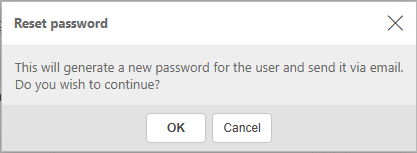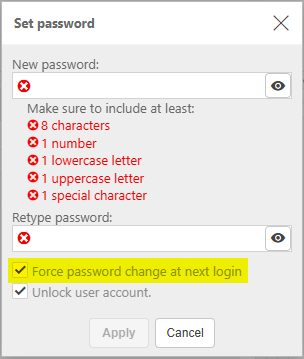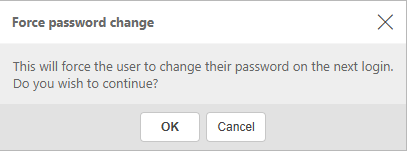User Account
A User account must be created for each person that needs to login to the system.
Included in the process of Creating a user, it is necessary to assign the [Access they are granted] (i.e. what they can see and do), the security that is applied (e.g. multi-factor authentication) and even the date range for when they can login.
The screenshot below shows a sample grid of users, which includes some key information.

- User type: restricts the user roles available for selection.
- Username: This is used to login with (the email below can also be used to login).
- Name:
- Email: This can also be used to login and is used for e.g. password reset communication.
- Mobile number.
- Access locked status: This will only be ticked if the user account has been locked or they have not yet been granted access permission via password reset.
- Last login: This will show the UTC date and time for the last time the user logged in.
- Failed tries: Shows the number of times the user has failed to enter their password or username correctly (this can be reset).
- MFA enabled: Identifies whether or not the multi-factor authentication login process has been successfully setup for the user.
- MFA required: When ticked then multi-factor authentication has to be used. This can be defaulted for the environment within environment defaults.
How to view User Accounts
Viewing a User Account
Select User Access / User accounts from the Settings section of the pulse menu -

Note
This is an example screen shot of the pulse menu.
Position of the menu items within pulse will vary according to available options and dependant on personal screen resolution.
or enter User accounts in the Quick Launch Side Menu.

This will then show the User accounts on the system where normal customisation of Sets can be used.

Tip
To modify the columns displayed, select  on the top right of the page, then tick/untick the information you want to hide or display.
on the top right of the page, then tick/untick the information you want to hide or display.
How to create User Accounts
Create a User Account
Select User accounts from one of the options as shown above in Viewing a User Account.
Press New.

Enter a new Username - (unique username - recommended format = [last name]+[initial of first name]), Contact name - (users full name) and Contact email (used for password reset emails).

Assign the accounts Access license - the User License can restrict the related user roles - select via the dropdown menu.

You can make Multi-factor-authentication a requirement by ticking Required under Multi-factor section.

If you would like multi-factor authentication to be a default setting for users under your domain, go to Environment defaults to set this preference.
Status section.

Access locked: This will be ticked if the user does not have access to their account.
Locked date: This will show the UTC date and time the account was locked.
Locked Reason: This will display here why the account was locked.
Force change password on next login: This will enforce the user to change their password upon login.
Failed tries: Shows the number of times the user has entered an incorrect password.
Explanation of the tabs

This tab will show the Users roles and Groups that need to be granted to the user.

Tip
You can copy access from another user. To do so, select Copy from then choose another user and press Apply. If you choose to copy access, you can ignore the following setup notes.
Note
Copying from another user will add their access permissions and can be done at any stage in addition to user access already granted.
Press Select under permissions and you will be presented with user roles to assign to the user.
Now, either select user roles individually or select user role groups.
Tip
It is advised to use groups for a more simplified setup.
Press Create.
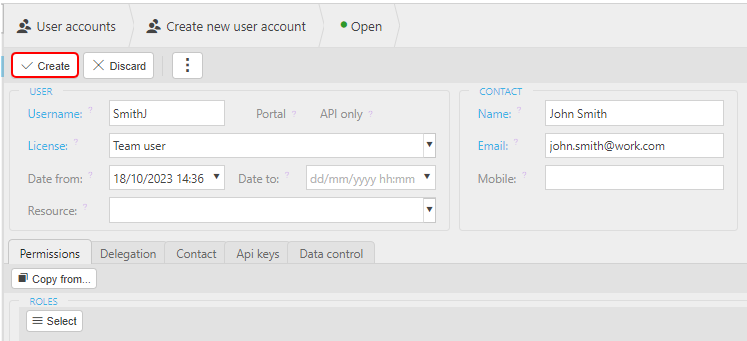
Press Allow login access.
Following the creation of a user they still need to be granted login access.

Tip
Typically, the use of Allow login access is following a user account being locked out (e.g. failed password). Upon Set password, Unlock user account has the same effect as Allow login access.

Press Set password.

You will now be asked to set a new password.
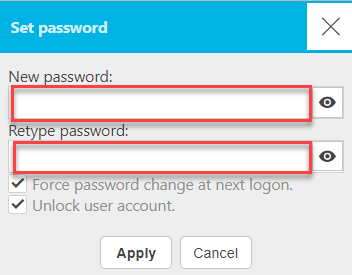
Tick Force password change at next logon to force the new user to create their own password when they first login. When this has been done, the previous password (initially set by you) will no longer work.
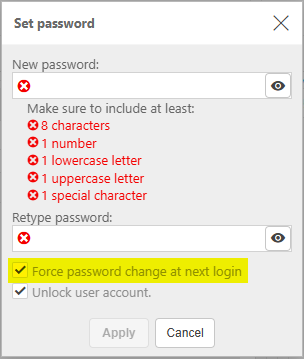
Tip
Password policy is defined within Environment defaults.
Press Apply.
How to import/export User Accounts
Import/export user accounts
You can now export user accounts to excel for editing. After exporting and making the changes you can upload the excel file back to the system to populate the new user accounts.
For information on performing an import/export please see Export/Import user accounts.
How to edit User Accounts
Edit a user
Press Edit.
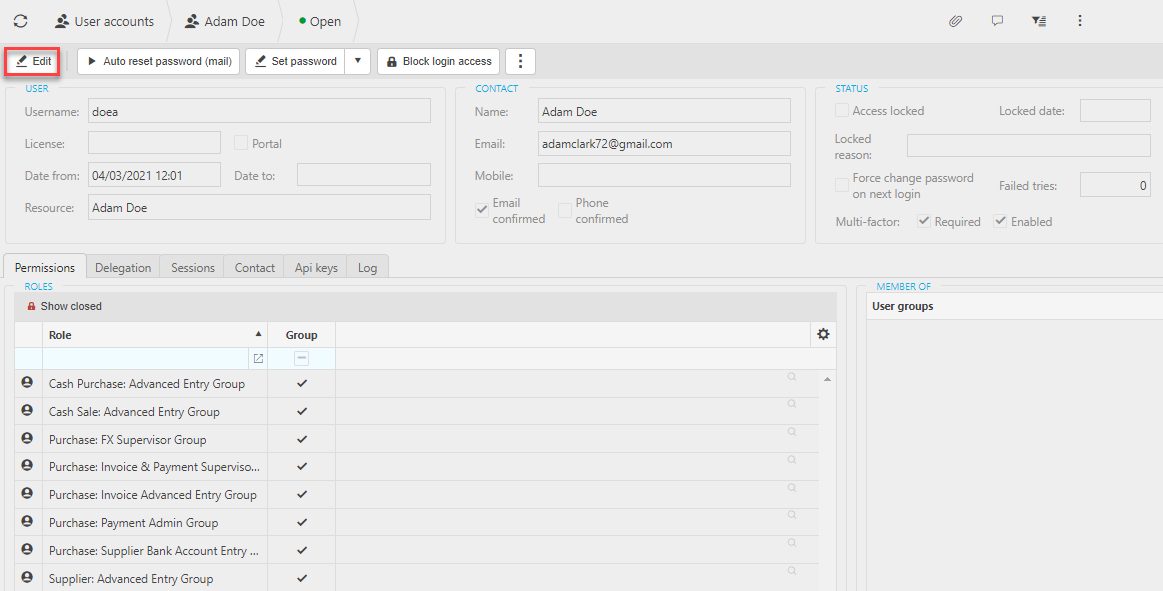
A number of editable boxes in the user, contact and status boxes will turn white.
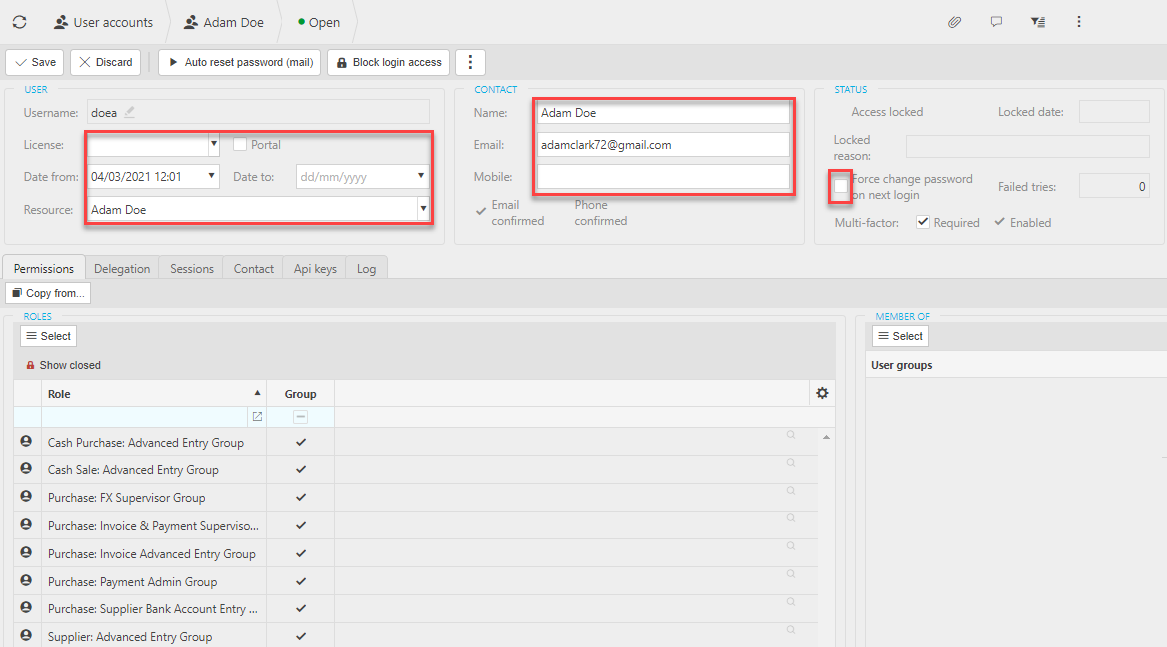
you can now change the information in these boxes.
You can also change permissions, delegations, sessions, API keys.
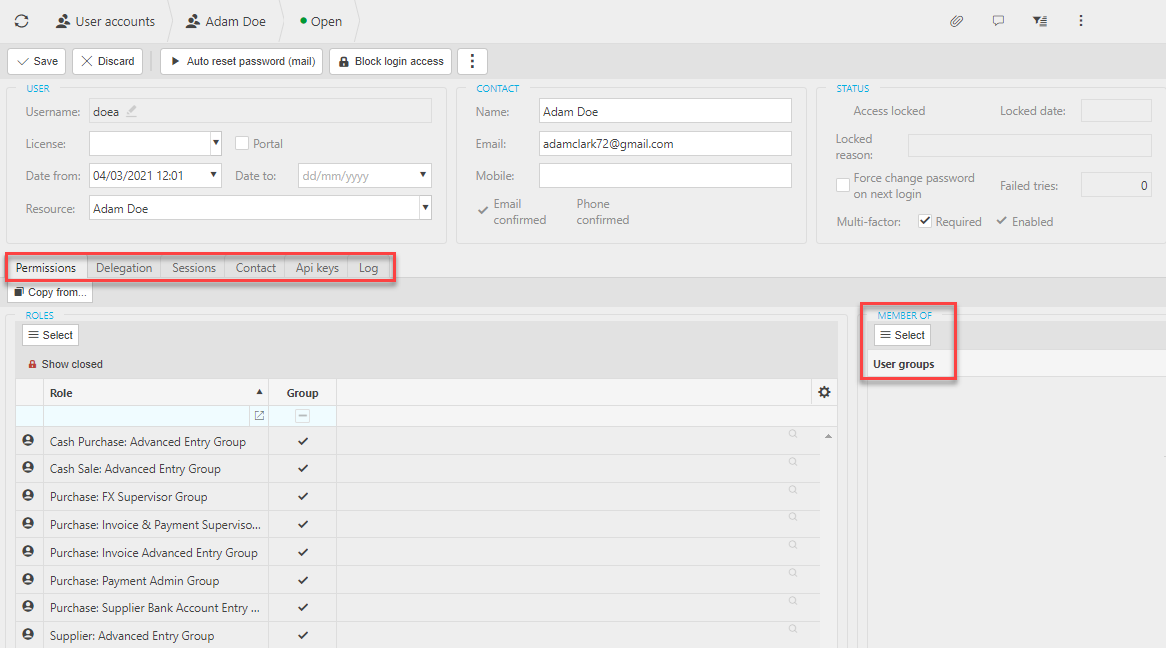
Press Save
How to auto set a User password
Auto reset a user's password
Press Auto reset password.
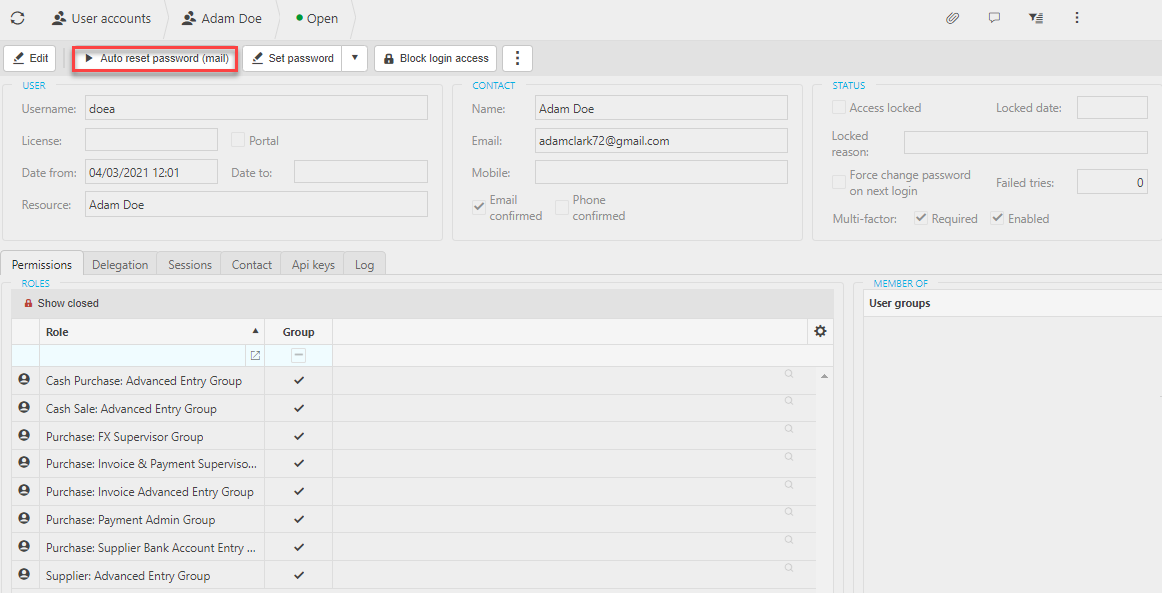
Press Submit.

How to create a resource
Create a resource
Press Create resource.

Press the Resource tab.

You can now edit the user resources.

Press Create.
How to set a User's password
Set a password for a user
Select Set password.

Enter a new password then re-type it below.
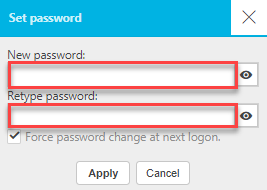
Tip
Press Force password change to make the user set their own password when they sign in. Once they enter their own password, the old one (set by you) will no longer work.
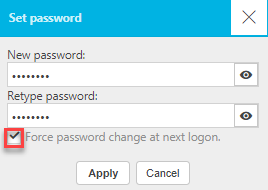
Select Apply.
How to block User access
Block login access
Select Block login access.
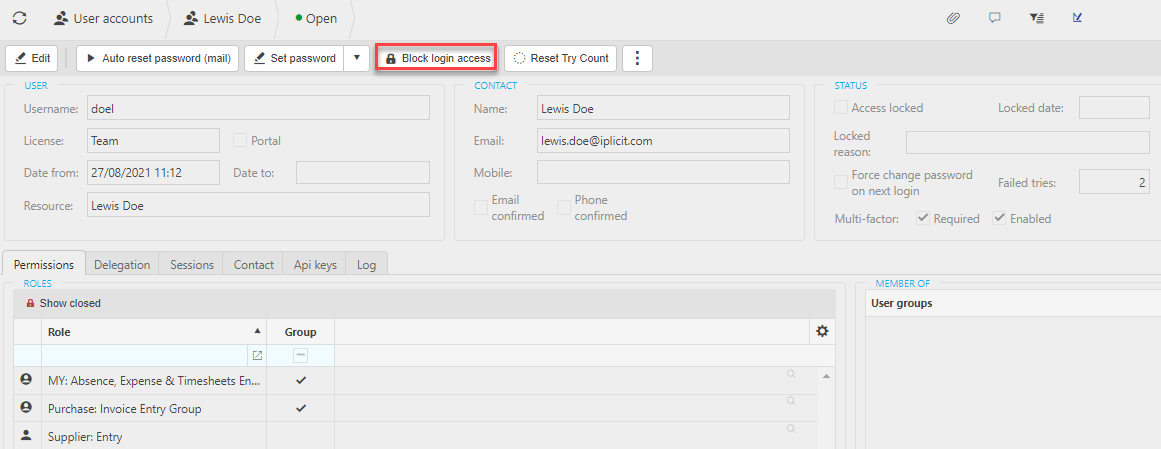
Enter a reason for blocking the user.
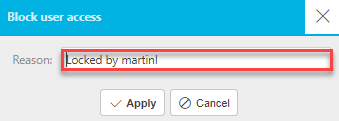
Select Apply.
How to reset a User's access limit
Reset password Tries
If the user has exceeded the limit of tries by entering the wrong login too many times, you can reset the tries and allow them to start again.
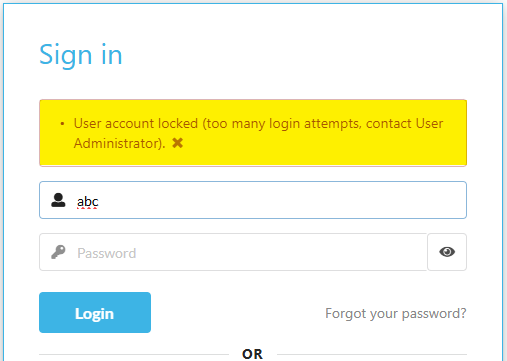
To do so, select Reset try count.

How to lock User Accounts
Lock a user account
Select the
 button.
button.Select Lock.

Tip
In order to unlock their account again, follow the same steps, however this time round Unlock will be presented instead of Lock.
How to manage MFA
Manage MFA
Select the
 button.
button.Now you can select either Remove or Do not enforce Multi-factor authentication.
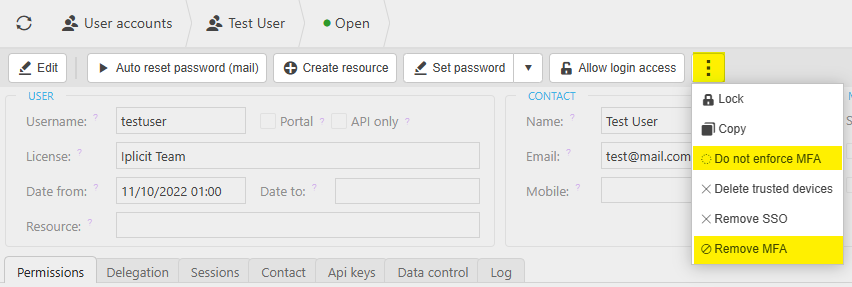
How to delete trusted devices
Delete trusted devices
Select the
 button.
button.Select Delete trusted devices.
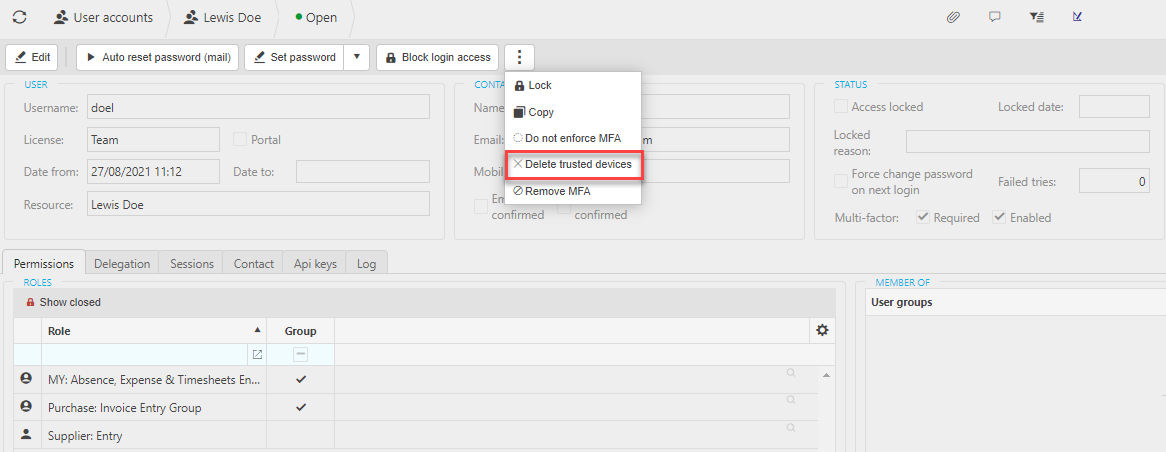
How to use the SSO wizard
SSO Link wizard
This option is used to quickly link users to the respective SSO provider(s).
There are separate options for Azure, and also, ways to link users e.g. OneLogin users to iplicit users.
On the main User account finder (i.e. do not select an individual User account), from the
 button select SSO Link Wizard.
button select SSO Link Wizard.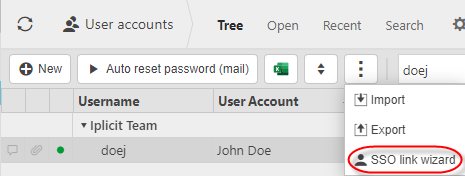
Azure AD users
Click on Login AzureAD to login to Azure.
Select Continue.

You will be presented with a list of users from Azure where a match will be attempted between the user email and the Azure email.
Note
If the users are already linked, you can select Remove Link to remove the connection.
Tick the Add link checkbox for each user you wish to link.

SSO users
Select SSO Link Wizard from the User account finder
Select Import CSV
Select the Provider
Select the CSV file of the SSO users
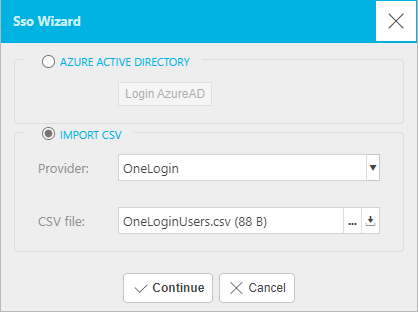
Tip
The columns required on the file to be uploaded as per example below, where the email must match the email on the user, and the object_id is that provided by the SSO software (e.g. OneLogin)

Select Continue
Updated November 2025





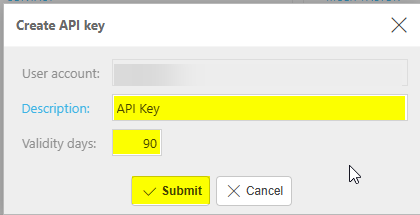



 option on Set password, select Auto mail new password.
option on Set password, select Auto mail new password.
